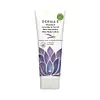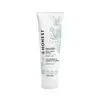Derma E Vitamin E Lavender & Neroli Skin Smoothing Shea Body Lotion Versus Honest Beauty Face + Body Lotion
What's inside
What's inside
 Key Ingredients
Key Ingredients

 Benefits
Benefits

 Concerns
Concerns

 Ingredients Side-by-side
Ingredients Side-by-side

Water
Skin ConditioningAloe Barbadensis Leaf Juice
Skin ConditioningCarthamus Tinctorius Seed Oil
MaskingGlycerin
HumectantGlyceryl Stearate Citrate
EmollientCetyl Alcohol
EmollientLactic Acid
BufferingStearic Acid
CleansingTocopheryl Acetate
AntioxidantSodium Hyaluronate
HumectantCeramide Ng
Skin ConditioningVaccinium Macrocarpon Seed Oil
Skin ConditioningSimmondsia Chinensis Seed Oil
EmollientElaeis Guineensis Oil
EmollientOlea Europaea Fruit Oil
MaskingPanthenol
Skin ConditioningCamellia Sinensis Leaf Extract
AntimicrobialButyrospermum Parkii Butter
Skin ConditioningAllantoin
Skin ConditioningGlyceryl Stearate
EmollientGlyceryl Stearate Se
EmulsifyingCetearyl Alcohol
EmollientCetearyl Glucoside
EmulsifyingSalicylic Acid
MaskingGlycolic Acid
BufferingSodium Hydroxide
BufferingPotassium Sorbate
PreservativeSodium Phytate
Phenoxyethanol
PreservativeEthylhexylglycerin
Skin ConditioningParfum
MaskingWater, Aloe Barbadensis Leaf Juice, Carthamus Tinctorius Seed Oil, Glycerin, Glyceryl Stearate Citrate, Cetyl Alcohol, Lactic Acid, Stearic Acid, Tocopheryl Acetate, Sodium Hyaluronate, Ceramide Ng, Vaccinium Macrocarpon Seed Oil, Simmondsia Chinensis Seed Oil, Elaeis Guineensis Oil, Olea Europaea Fruit Oil, Panthenol, Camellia Sinensis Leaf Extract, Butyrospermum Parkii Butter, Allantoin, Glyceryl Stearate, Glyceryl Stearate Se, Cetearyl Alcohol, Cetearyl Glucoside, Salicylic Acid, Glycolic Acid, Sodium Hydroxide, Potassium Sorbate, Sodium Phytate, Phenoxyethanol, Ethylhexylglycerin, Parfum
Water
Skin ConditioningCaprylic/Capric Triglyceride
MaskingGlyceryl Stearate Se
EmulsifyingGlycerin
HumectantCetearyl Alcohol
EmollientCarthamus Tinctorius Seed Oil
MaskingRicinus Communis Seed Oil
MaskingAloe Barbadensis Leaf Juice
Skin ConditioningGlyceryl Stearate Citrate
EmollientButyrospermum Parkii Butter
Skin ConditioningCalendula Officinalis Flower Extract
MaskingChamomilla Recutita Flower Extract
MaskingCocos Nucifera Fruit Extract
EmollientRhus Verniciflua Peel Wax
Hydrolyzed Jojoba Esters
Skin ConditioningGlycine Soja Oil
EmollientEthyl Macadamiate
Skin ConditioningCaprylyl Glycol
EmollientPanthenol
Skin ConditioningMicrocrystalline Cellulose
AbsorbentXanthan Gum
EmulsifyingAllantoin
Skin ConditioningCellulose Gum
Emulsion StabilisingTocopherol
AntioxidantCaprylhydroxamic Acid
Trisodium Ethylenediamine Disuccinate
Ascorbyl Palmitate
AntioxidantHelianthus Annuus Seed Oil
EmollientPotassium Sorbate
PreservativeCitric Acid
BufferingWater, Caprylic/Capric Triglyceride, Glyceryl Stearate Se, Glycerin, Cetearyl Alcohol, Carthamus Tinctorius Seed Oil, Ricinus Communis Seed Oil, Aloe Barbadensis Leaf Juice, Glyceryl Stearate Citrate, Butyrospermum Parkii Butter, Calendula Officinalis Flower Extract, Chamomilla Recutita Flower Extract, Cocos Nucifera Fruit Extract, Rhus Verniciflua Peel Wax, Hydrolyzed Jojoba Esters, Glycine Soja Oil, Ethyl Macadamiate, Caprylyl Glycol, Panthenol, Microcrystalline Cellulose, Xanthan Gum, Allantoin, Cellulose Gum, Tocopherol, Caprylhydroxamic Acid, Trisodium Ethylenediamine Disuccinate, Ascorbyl Palmitate, Helianthus Annuus Seed Oil, Potassium Sorbate, Citric Acid
Ingredients Explained
These ingredients are found in both products.
Ingredients higher up in an ingredient list are typically present in a larger amount.
Allantoin is a soothing ingredient known for its protective and moisturizingg properties. Because of this, it is often added to products with strong active ingredients.
Studies show higher concentrations of this ingredient can promote wound healing.
Though it can be derived from the comfrey plant, allantoin is produced synthetically for cosmetic products to ensure purity.
Learn more about AllantoinAloe Barbadensis Leaf Juice comes from leaves of the aloe plant. Aloe Barbadensis Leaf Juice is best known for helping to soothe sunburns. It is also anti-inflammatory, moisturizing, antiseptic, and can help heal wounds.
Aloe is packed with good stuff including Vitamins A, C, and E. These vitamins are antioxidants, which help fight free-radicals and the damage they may cause. Free-radicals are molecules that may damage your skin cells, such as pollution.
Aloe Barbadensis Leaf Juice also contains sugars. These sugars come in the form of monosaccharides and polysaccharides, folic acid, and choline. These sugars are able to help bind moisture to skin.
It also contains minerals such as calcium, 12 anthraquinones, fatty acids, amino acids, and Vitamin B12.
Learn more about Aloe Barbadensis Leaf JuiceThis ingredient is also known as shea butter. It is an effective skin hydrator and emollient.
Emollients help soothe and soften your skin. It does this by creating a protective film on your skin. This barrier helps trap moisture and keeps your skin hydrated. Emollients may be effective at treating dry or itchy skin.
Shea butter is rich in antioxidants. Antioxidants help fight free-radicals, or molecules that may harm the body. It is also full of fatty acids including stearic acid and linoleic acid. These acids help replenish the skin and keep skin moisturized.
While Shea Butter has an SPF rating of about 3-4, it is not a sunscreen replacement.
Shea butter may not be fungal acne safe. We recommend speaking with a professional if you have any concerns.
Learn more about Butyrospermum Parkii ButterCarthamus tinctorius seed oil comes from safflower, one of humanity's oldest crops.
Safflower seed oil contains a high percentage of linoleic acid and oleic acid. It also contains Vitamin E. These three components are effective moisturizers.
Vitamin E helps nourish your skin's lipid barrier. It is also a potent antioxidant. Antioxidants help fight free-radical molecules, or unstable molecules that may damage your skin cells.
Due to its high fatty acid content, this ingredient may not be malassezia folliculitis safe.
Thoughout history, safflower has been used for dying fabrics and in food as a saffron substitute.
Learn more about Carthamus Tinctorius Seed OilCetearyl alcohol is a mixture of two fatty alcohols: cetyl alcohol and stearyl alcohol. It is mainly used as an emulsifier. Emulsifiers help prevent the separation of oils and products. Due to its composition, it can also be used to thicken a product or help create foam.
Cetearyl alcohol is an emollient. Emollients help soothe and hydrate the skin by trapping moisture.
Studies show Cetearyl alcohol is non-toxic and non-irritating. The FDA allows products labeled "alcohol-free" to have fatty alcohols.
This ingredient is usually derived from plant oils such as palm, vegetable, or coconut oils. There is debate on whether this ingredient will cause acne.
Due to the fatty acid base, this ingredient may not be Malassezia folliculitis safe.
Learn more about Cetearyl AlcoholGlycerin is already naturally found in your skin. It helps moisturize and protect your skin.
A study from 2016 found glycerin to be more effective as a humectant than AHAs and hyaluronic acid.
As a humectant, it helps the skin stay hydrated by pulling moisture to your skin. The low molecular weight of glycerin allows it to pull moisture into the deeper layers of your skin.
Hydrated skin improves your skin barrier; Your skin barrier helps protect against irritants and bacteria.
Glycerin has also been found to have antimicrobial and antiviral properties. Due to these properties, glycerin is often used in wound and burn treatments.
In cosmetics, glycerin is usually derived from plants such as soybean or palm. However, it can also be sourced from animals, such as tallow or animal fat.
This ingredient is organic, colorless, odorless, and non-toxic.
Glycerin is the name for this ingredient in American English. British English uses Glycerol/Glycerine.
Learn more about GlycerinGlyceryl Stearate Citrate is a citric acid ester of glyceryl stearate.
It is an emulsifier, emollient, and a surfactant.
Emulsifiers help stabilize a product. It does this by preventing certain ingredients from separating. Common ingredients include oils and water, which do not mix naturally. Emulsifiers have properties that help keep ingredients such as these together.
Emollients help soothe and soften the skin. They do this by creating a protective film on your skin. This barrier helps trap moisture and keeps your skin hydrated. Emollients may be effective at treating dry or itchy skin.
Surfactants help gather oils, dirt, and other pollutants from the skin. This helps them to be easily rinsed away.
Learn more about Glyceryl Stearate CitrateGlyceryl Stearate Se is a self-emulsifying (SE) form of glyceryl stearate. Self-emusifying means this ingredient automatically blends with water. It is an emulsifier, emollient, and cleansing agent.
As an emulsifier, Glyceryl Stearate Se prevents ingredients such as oil and water from separating. It is also a surfactant, meaning it helps cleanse the skin. Surfactants help gather oil, dirt, and other pollutants so they may be rinsed away easily.
Emollients help your skin stay smooth and soft. It does so by creating a film on top of the skin that helps trap moisture in.
Learn more about Glyceryl Stearate SePanthenol is a common ingredient that helps hydrate and soothe the skin. It is found naturally in our skin and hair.
There are two forms of panthenol: D and L.
D-panthenol is also known as dexpanthenol. Most cosmetics use dexpanthenol or a mixture of D and L-panthenol.
Panthenol is famous due to its ability to go deeper into the skin's layers. Using this ingredient has numerous pros (and no cons):
Like hyaluronic acid, panthenol is a humectant. Humectants are able to bind and hold large amounts of water to keep skin hydrated.
This ingredient works well for wound healing. It works by increasing tissue in the wound and helps close open wounds.
Once oxidized, panthenol converts to pantothenic acid. Panthothenic acid is found in all living cells.
This ingredient is also referred to as pro-vitamin B5.
Learn more about PanthenolPotassium Sorbate is a preservative used to prevent yeast and mold in products. It is commonly found in both cosmetic and food products.
This ingredient comes from potassium salt derived from sorbic acid. Sorbic acid is a natural antibiotic and effective against fungus.
Both potassium sorbate and sorbic acid can be found in baked goods, cheeses, dried meats, dried fruit, ice cream, pickles, wine, yogurt, and more.
You'll often find this ingredient used with other preservatives.
Learn more about Potassium SorbateWater. It's the most common cosmetic ingredient of all. You'll usually see it at the top of ingredient lists, meaning that it makes up the largest part of the product.
So why is it so popular? Water most often acts as a solvent - this means that it helps dissolve other ingredients into the formulation.
You'll also recognize water as that liquid we all need to stay alive. If you see this, drink a glass of water. Stay hydrated!
Learn more about Water